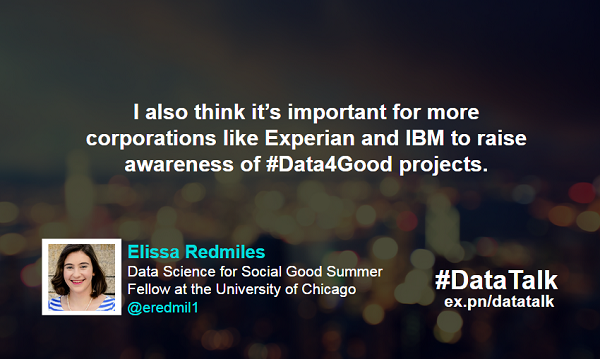How to Use Data for Good
Join our #DataTalk on Twitter on Thursdays at 5 p.m. ET.
This week, we learned about ways to leverage data for good with our special guests: DataKind – Harnessing the Power of Data Science in the Service of humanity, Elissa Redmiles, a Data Science for Social Good Summer Fellow at the University of Chicago, Nick Eng, Data Scientist at the Center for Data Science and Public Policy at the University of Chicago, Kevin Chen, the Chief Scientist at the Experian, North America Data Lab.
We also received some awesome insights from Real Impact Analytics on ways they are using data for good. Their notes are included in the deck above. If you have questions or suggestions for future topics and guests, please tweet @MikeDelgado.
Here are highlights from our chat:
How do you define “data for good” projects?
“Data for good projects use data and data science to help nonprofits better reach their mission and assist their target audience.” [Retweet]
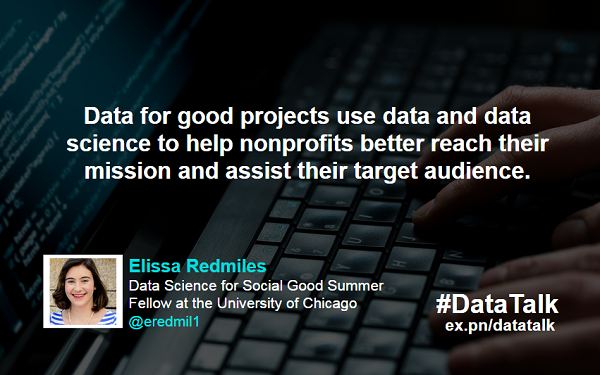
“Data and subject matter experts working together to use data to address humanitarian challenges. Collaboration is key.” [Retweet]
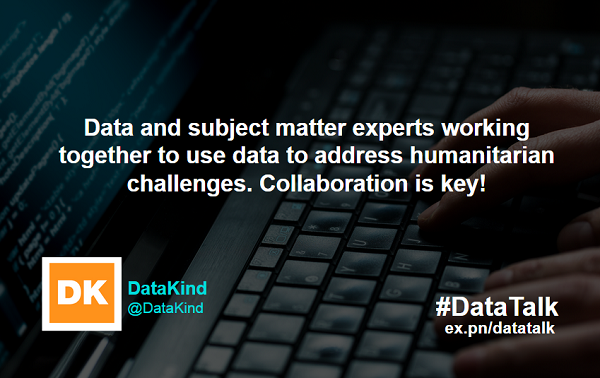
What are some favorite examples of how data has been leveraged for good?
Our favorite data for good example is the use of telecom data with the Global Pulse UN team in Uganda to detect and tackle food crisis and prioritize actions against poverty. More specifically, we have developed a mapping of income inequality and income shocks in Africa using changes in pre-paid patterns. – Real Impact Analytics
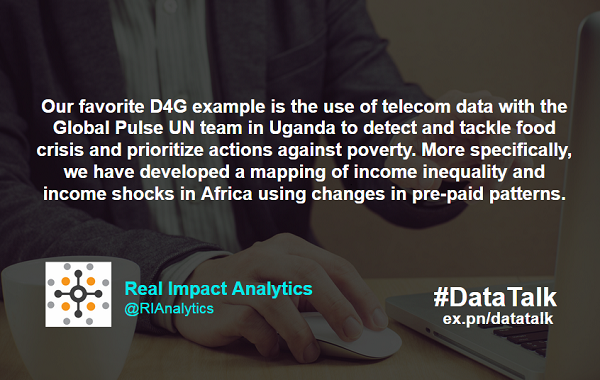
DataKind UK volunteers mapped public data to help Shooting Star Chase Children’s Hospice Care find children in need of hospice care. [Retweet]
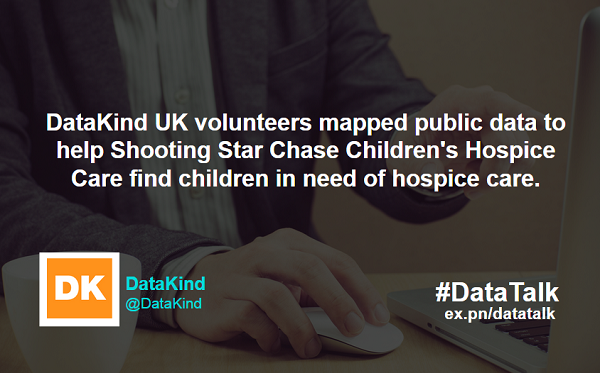
What challenges do organizations face when working on data philanthropy projects?
Finding balance between retaining proprietary knowledge on either data or technology and applying to data for good projects can be hard. [Retweet]
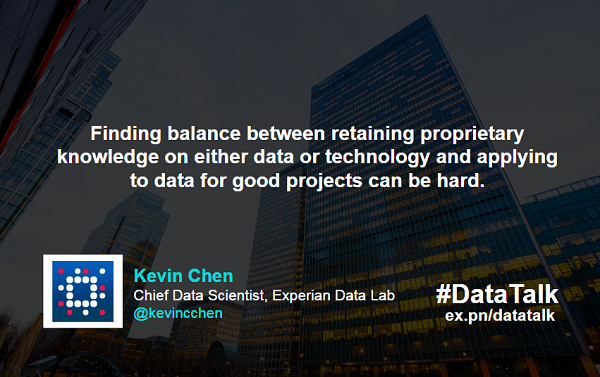
Fancy models or cool visualizations is only step one. Making these tools part of the day-to-data is number two. [Retweet]
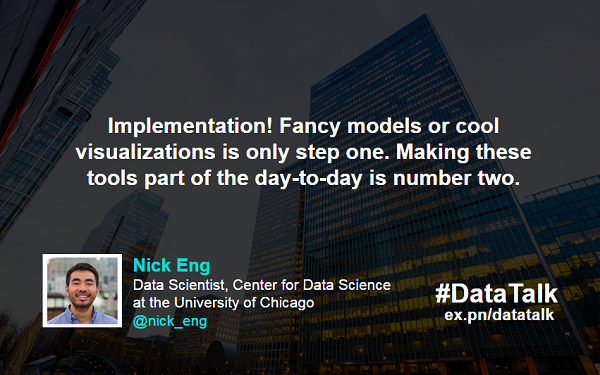
The key challenge is to maintain protection of user/client info and data without it being compromised/leaked. [Retweet]
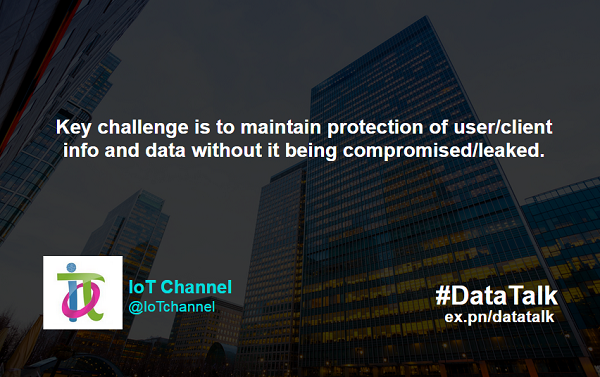
What type of data can be leveraged for “data for good” projects?
Time series, text, audio, geo, etc. We need to make sure privacy is preserved and it doesn’t promote discrimination. [Retweet]
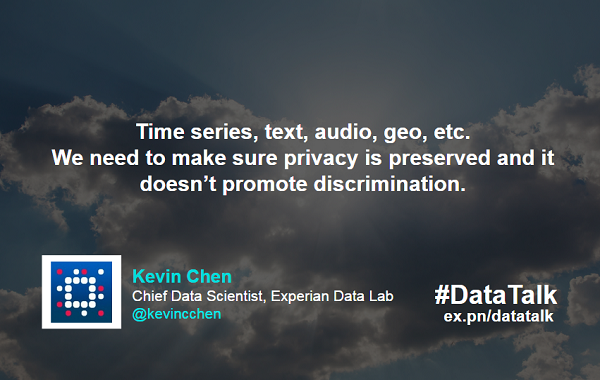
Open data and APIs are a great start. For example, check out new CitySDK from census. [Retweet]
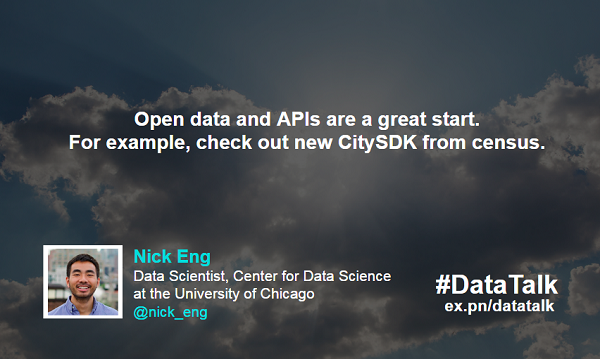
What are some best practices for using data for good?
We need to understand the actual needs of the potential users, assess correlation between available data and possible actions and outcomes. And adapt apps and algorithms accordingly. – Real Impact Analytics
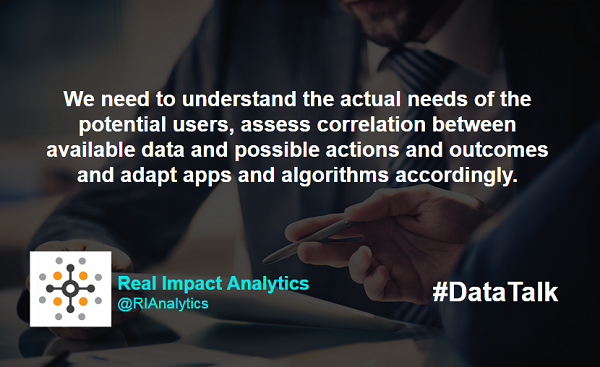
Talk to SMEs and find the domain knowledge you don’t have. Data is only half the puzzle. [Retweet]
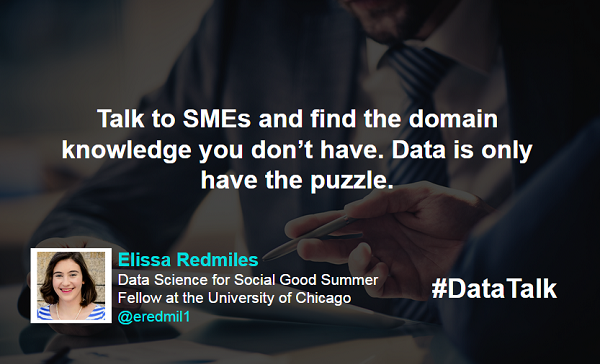
What are ways to use data for good, while protecting confidentiality and privacy?
Add noise to the data, bucket the values (e.g. age) or use a coarser level of info (e.g. zip3 vs. zip5) when possible. [Retweet]
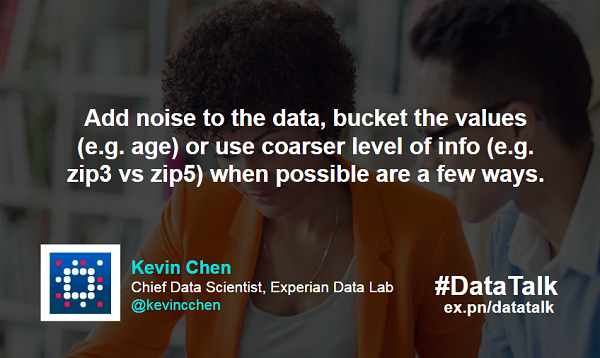
We’ve been working on solutions for homomorphisms for database operations to create a privacy aware kernel for data science. [Retweet]
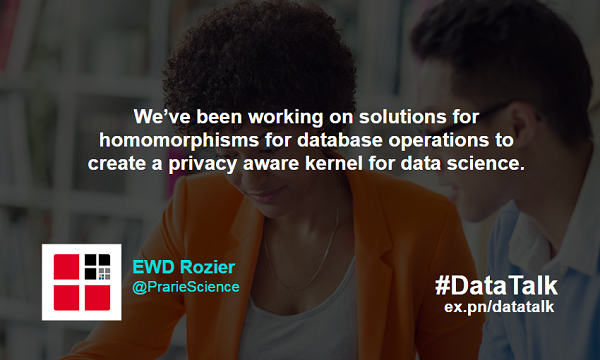
What type of data philanthropy projects would you like to see happen?
I think it’s important for more corporations like Experian and IBM to raise awareness of #Data4Good projects. [Retweet]
